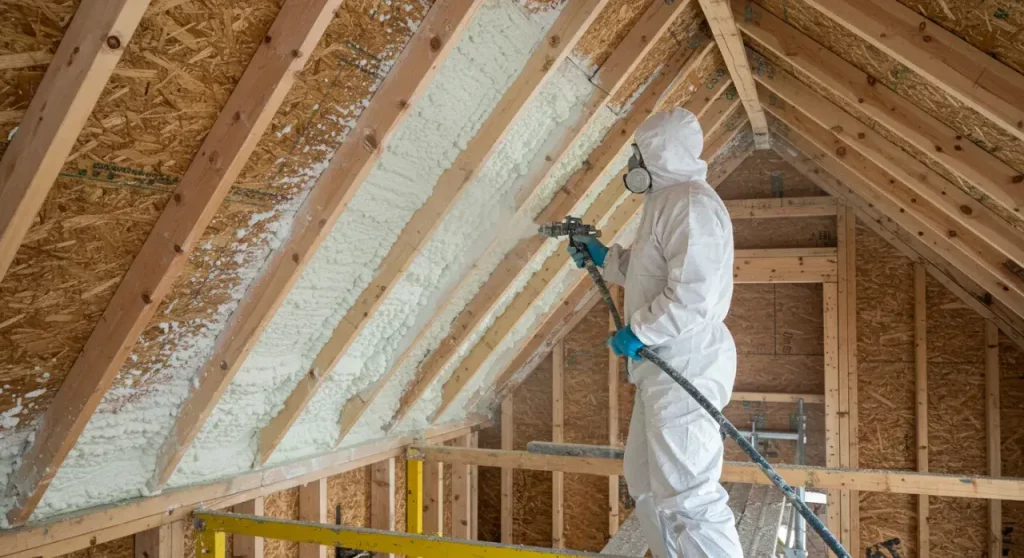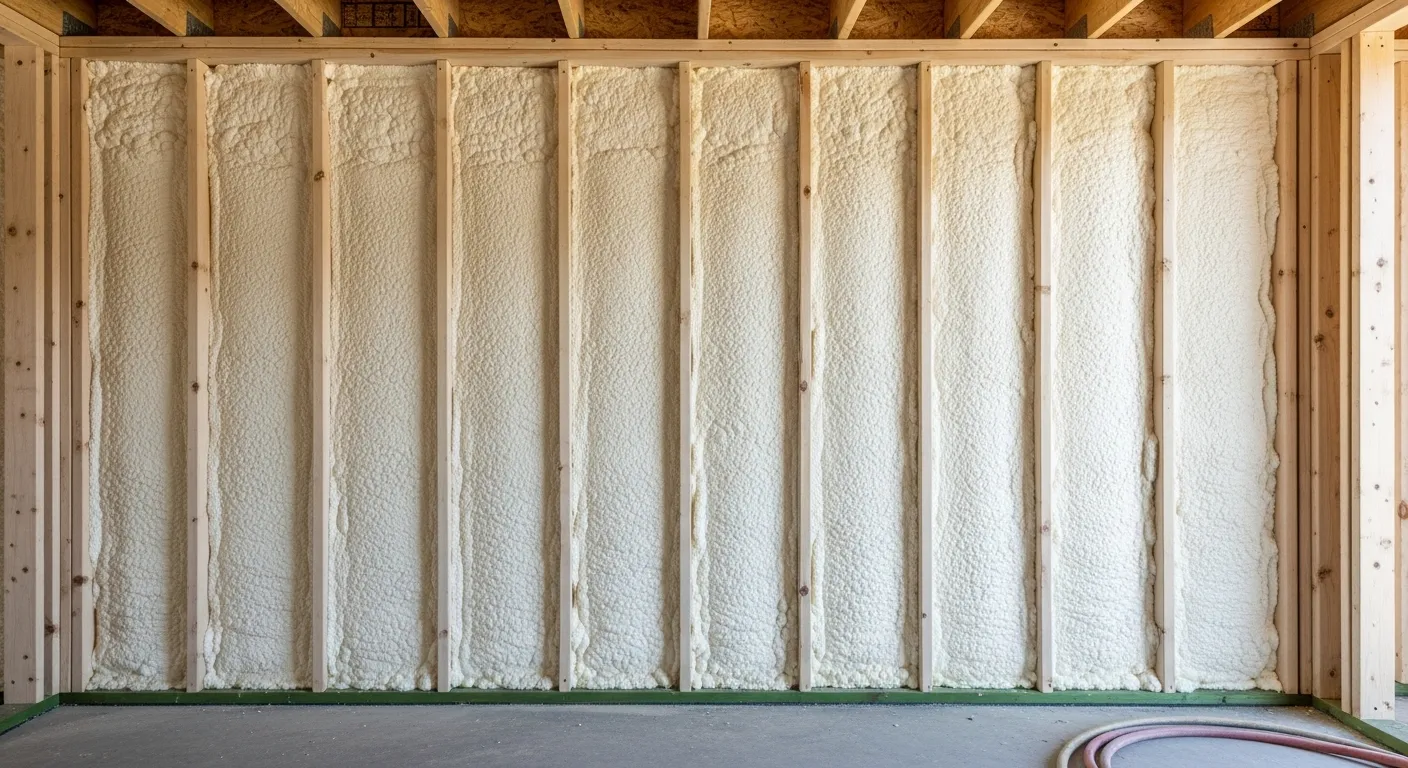The typical payback period for a spray foam insulation investment ranges from three to seven years. Homeowners often see the full return on their costs through lower energy bills in that time frame. This period depends on local energy prices, home size, and climate conditions. For example, in colder regions like the Midwest, where heating demands run high, payback can come faster due to greater energy savings.
This guide explains the details behind that range, covers key factors, and shows how to estimate your own situation. Readers will find steps for calculations, real-world examples, and tips drawn from actual installations. Foam Worx Insulation draws on projects across various homes to share these observations, ensuring the information reflects practical outcomes rather than theory alone.
Understanding Payback Period Basics
Payback period measures how long it takes for energy savings to cover the initial cost of insulation. Spray foam stands out because it seals air leaks and provides strong thermal resistance in one step. Unlike fiberglass, it expands to fill gaps, which cuts heat loss more effectively.
Energy savings add up quickly in homes with poor insulation. A typical project might cost $1.50 to $3 per square foot, depending on thickness and access. Over time, reduced heating and cooling needs offset that expense. Data from the U.S. Department of Energy indicates that proper insulation can lower utility bills by 15% to 20% in average homes.
Factors That Influence Payback Time
Several elements determine how soon savings recoup costs. Energy costs top the list; higher rates in areas like Minnesota speed up the process. A family paying $300 monthly on heating in winter might save $50 right away with spray foam insulation.
Climate plays a big role too. In hot, humid southern states, cooling savings dominate. Up north, heating cuts matter most. Spray foam’s closed-cell type works well in damp areas, preventing moisture issues that could otherwise extend payback time.
Home specifics also count. Older houses with drafts benefit more than new builds. Adding R-value from 10 to 30 can double savings in leaky attics or walls.
Market data shows the national average energy bill hit $119 per month in 2022, per the U.S. Energy Information Administration. Insulation investments respond directly to such rises. For even better results, check ductwork first, as sealing ducts before insulating walls can boost overall efficiency by 10%, shortening payback by six months in many cases.
Bonus Tip from Installations
Prioritizing duct sealing alongside spray foam installation ensures maximum energy efficiency gains.
Calculating Payback for Your Home
Start with your current energy bills. Track heating and cooling costs over a year. Next, estimate savings from spray foam. Tools from the U.S. Department of Energy suggest 10% to 30% reductions based on your zone.
Divide initial costs by annual savings. For a $5,000 project saving $1,000 yearly, payback hits in five years. Adjust for incentives like tax credits, which lower upfront expenses.

Here’s a simple table to compare payback across scenarios:
| Scenario | Initial Cost | Annual Savings | Payback Period |
|---|---|---|---|
| Small Home, Mild Climate | $3,000 | $600 | 5 years |
| Large Home, Cold Climate | $8,000 | $2,000 | 4 years |
| Average Retrofit | $5,500 | $1,200 | 4.6 years |
This table uses real averages from industry reports. Numbers vary, but it gives a clear starting point.
Regional note: In Minnesota’s harsh winters, where temperatures drop below zero, spray foam’s ability to block wind-driven cold shortens payback to under four years for most attics. A blower door test can reveal exact air loss, helping predict savings within 5% accuracy during planning.
Bonus Tip for Accurate Estimates
Including a blower door test in your planning process leads to more precise savings projections.
Things to Consider Before Making a Decision
Assess your home’s current setup. Inspect attics and basements for existing insulation levels. If fiberglass already sits there, adding spray foam on top might not make sense.
Think about long-term plans. Homeowners staying five years or more gain the most from investments. Short-term sellers should weigh resale value boosts, which studies show add 1% to 3% to home prices.
Budget for professional work. DIY kits exist, but full jobs ensure even coverage and avoid health risks from improper mixing.
Energy audits help too. They pinpoint high-loss areas, focusing spending where it counts. Local utility rebates often cover part of audit costs.
Finally, review warranties. Quality spray foam lasts 20 to 30 years, far outpacing the payback period.
Common Questions on Payback Periods
Does Spray Foam Insulation Pay Off Faster Than Other Types?
Many wonder if spray foam pays off faster than other types. It often does, thanks to superior sealing. In side-by-side installs, spray foam shows 20% better savings over batt insulation in the first year.
What Are the Summer Benefits of Spray Foam Insulation?
Others ask about summer benefits. Cooling accounts for 40% of bills in warmer zones, so payback includes both seasons. Hybrid climates see balanced returns.
Should I Worry About Off-Gassing With Spray Foam?
A frequent concern involves off-gassing. Modern formulas cure fast, with no impact on payback calculations.
When’s the Best Time to Install Spray Foam Insulation?
For optimal timing, consider installing in fall or spring, as mild weather makes application smoother and lets you start capturing savings with the next heating season.
Bonus Tip for Seasonal Planning
Choosing off-peak seasons for installation minimizes disruptions and accelerates the start of your energy savings.
Key Points on Spray Foam Investments
As covered throughout, payback periods generally range from three to seven years, depending on energy costs, climate, and home needs. Personalized calculations, along with considerations like audits, incentives, and warranties, help refine your timeline and maximize returns.
To get the most out of this investment, evaluate your current bills, local conditions, and future plans carefully. Aligning it with your long-term savings objectives ensures worthwhile results.
Ready to Assess Your Options
Homeowners facing high bills should review insulation needs soon. Foam Worx Insulation offers consultations to map out payback estimates based on specific setups. Contact via email at [email protected] or call (507) 407-6688 for straightforward guidance on next steps. This approach helps align choices with actual savings potential without added pressure.
Questions Homeowners Often Ask
Does Location Affect Payback Speed?
Yes, local climate and utility rates change everything. Northern states with long heating seasons recover costs quicker. A study by the Oak Ridge National Laboratory found Midwest homes average three-year paybacks, versus five in the Southwest.
How Do Tax Incentives Factor In?
Federal credits cover up to 30% of costs through 2032, per the Inflation Reduction Act. This drops effective payback by one to two years for qualifying projects.
Is Spray Foam Worth It for Older Homes?
Absolutely, if drafts exist. Retrofitting walls and attics in 1950s builds often yields 25% bill drops, hitting payback in four years.
What If Energy Prices Drop?
Savings scale with rates. Even at stable prices, spray foam’s efficiency holds up. Historical trends show prices rising 3% yearly, extending benefits.
Can I Combine It with Other Upgrades?
Pairing with windows or HVAC tweaks multiplies savings. Combined projects shorten overall payback to two to three years in energy audits.
Sources
- U.S. Department of Energy – Government resource on insulation benefits and energy savings calculations.
- U.S. Energy Information Administration – Official data on average household energy expenditures and trends.
- Oak Ridge National Laboratory – Research report analyzing regional payback variations for insulation types.




